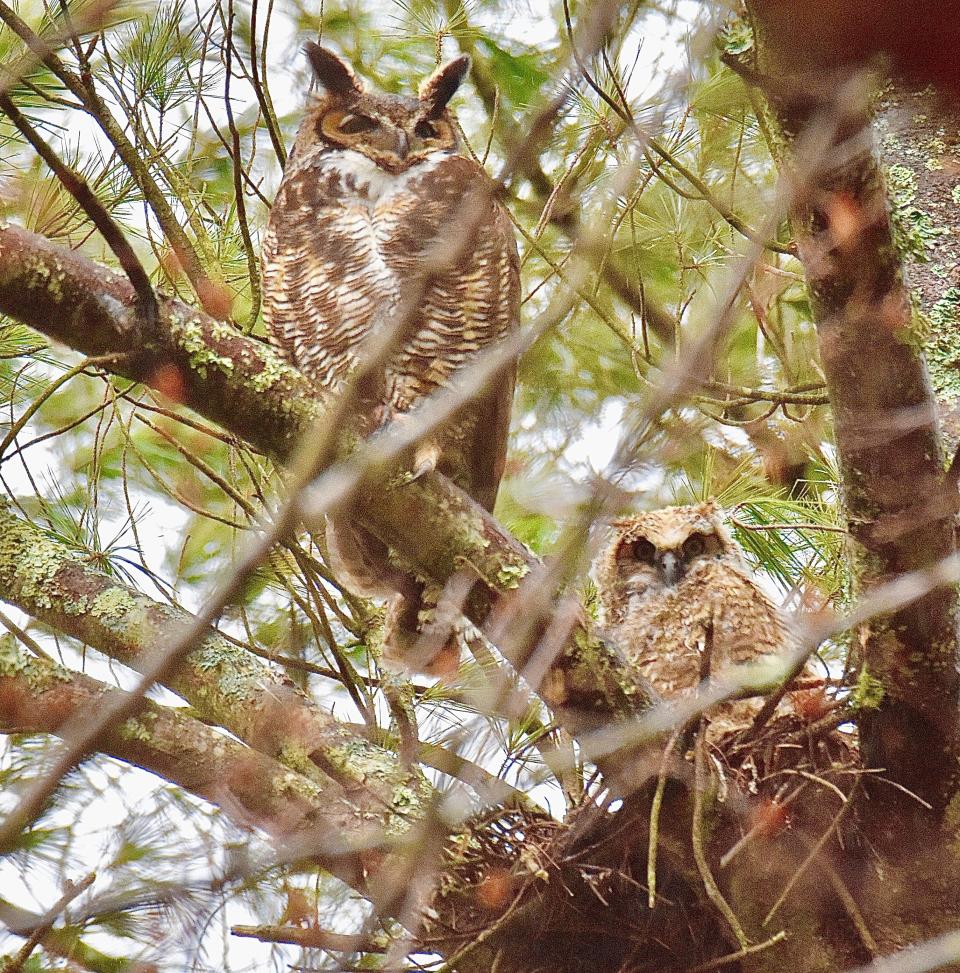April is the best month to visit wetlands. Here's why
With April half gone, I would like to think most of our winter-like weather has passed. No doubt more will come, but the earth’s warming won’t be denied. As days slowly lengthen, a flood of new life will engulf us.
Here are a few of the wonderful things we can look forward to in the coming fortnight:
In woodlands, my favorite birds will arrive. Yellow-bellied sapsuckers will drum out their Morse Code announcements, meant to attract mates and discourage other males from trespassing. Overhead, newly arrived broad-winged hawks (all the way from South America) will wheel in tight circles as they call out pee-eeee, almost too high for humans to hear.

On the forest floor, hermit thrushes will flash rusty-red tails as they kick through loose leaves seeking early bird beetles and worms.
That same forest floor will be showing off flowers, among them spring beauties, trout lily and a spring patch of white trillium. Another plot of rich loamy soil might yield Dutchman’s britches, blue cohosh or a nice clump of cut-leaved toothwort.
Wild leeks will be thrusting their spear-shaped leaves skyward. And high in a pine, looking down on it all, a great horned owl parent will perch by its fuzzy fledgling.
More: Remembering this trip down Autumn Leaves Road: 2016 field journal
Mid- to late April just might be the best time to visit a favorite wetland. At its edges, their feet wet by choice, will grow skunk cabbage and buttercup-yellow cowslips. Flower field guides call cowslips marsh marigolds. But I speak at a lot of senior centers, where folks in their 80s grew up as farm kids, and their parents took them looking for cowslips. The leaves of this plant, when brand new, make a tasty boiled green.
In the wetland itself, painted turtles will bask on semi-submerged loafing logs, while in ankle-deep water, amid shoots of rushes, meadow frogs will call out with a sound much like snoring to attract other meadows for mating.
Other sounds will skim over the wetland’s still water: whoo-eek from a female wood duck as she streaks past, her bright-colored mate close behind; whoops, coos and kuk-kuk-kuk notes from a pied-billed grebe hidden in cattails.
More: Get familiar with your outdoor surroundings and find wonder in the smallest changes
And close to shore, walkers might scare up a snipe or reclusive American bittern. Both birds migrate through upstate wetlands as late April pushes toward May.
Down by the river, who knows what you’ll find? An eagle’s white head poking over the edge of a massive stick nest in the fork of a tall sycamore? An osprey, perhaps, overhead on the wing, looking down in the shallows for carp?
And at home, fine grass nests will lie snug in the bottom of boxes folks place in back yards. Eastern bluebirds will be perching nearby. Nearby, on top of a handy eavestrough, eastern phoebes will be crafting their nest made of mud, moss and grasses.
I’ve run out of space. This is such a small sampling. Let the spring flood commence its outpouring.
E-mail Rick at [email protected]
This article originally appeared on Binghamton Press & Sun-Bulletin: April is the best month to visit wetlands. Here's why